How to unscrew the nut on the mixer?

Sooner or later, faucets in the bathroom and in the kitchen fail. It is necessary to take measures to eliminate the leakage of the mixer. If it is an expensive and high-quality model, repairs are made, replacing gaskets or broken parts. A cheap Chinese mixer is easier to replace. But in any case, you need to dismantle the crane or disassemble to replace the desired part. The first question is how to unscrew the rusty mixer nuts.
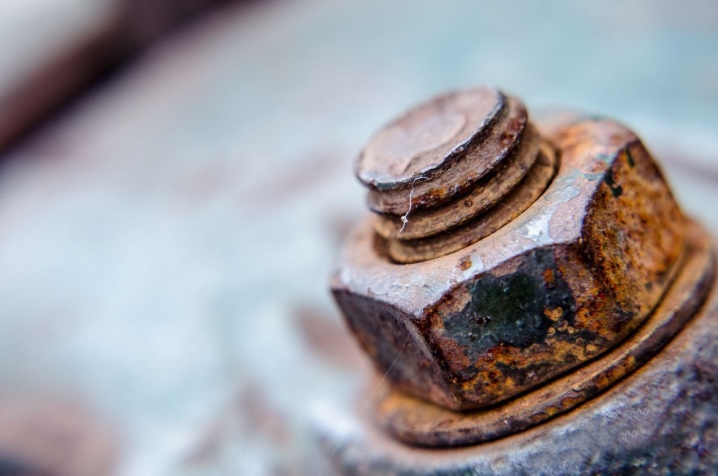
Preparation and necessary tools
Before starting work, shut off the water to the mixer. Usually the riser in the apartment is turned off. But sometimes you have to turn off the water in the whole house. Therefore, the necessary tools are selected in advance in order to quickly make repairs and not cause inconvenience to neighbors. To loosen the nut on the mixer, use the following tools:
- adjustable wrench;
- a set of spanner keys;
- heads with a crank;
- socket tubular wrench;
- pliers and screwdrivers (flat and curly).
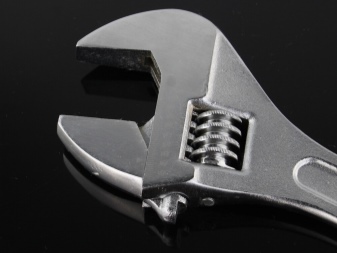
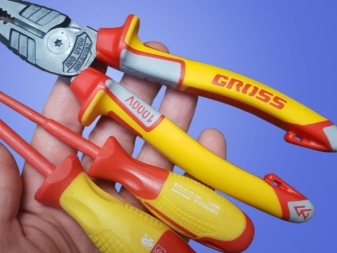
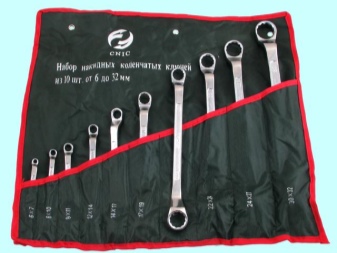
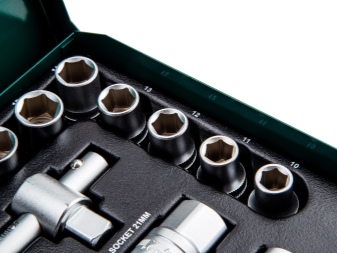
Each of these tools can be indispensable for loosening the mixer clamp nut. Most often, rusted parts cannot be easily removed.
If the main task is to save the mixer for future use, you need to use tools that do not violate the integrity of the parts.
The kitchen sink mixer is fastened with a nut under the sink. Not a very convenient place for work with a large tool. If the clamping nut under the sink is very rusty, first brush its surface with a metal brush.
It is not always possible to easily unscrew the sour nut fastening the kitchen sink mixer. You can use a box wrench of the correct size or use a socket wrench. A knob is inserted into its hole. This connection will help to unscrew even a stuck nut.
Socket wrenches are convenient for use in tight spaces under the sink. These are stainless steel hexagons with sizes from 10 to 40 mm.
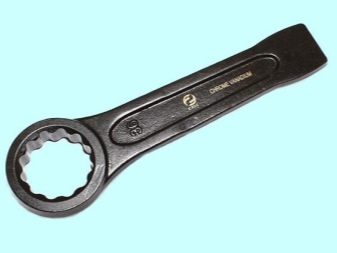

Tapping the nut before attempting to unscrew can break the rusty grip between the nut and the bolt. Then the process will take place without much effort.
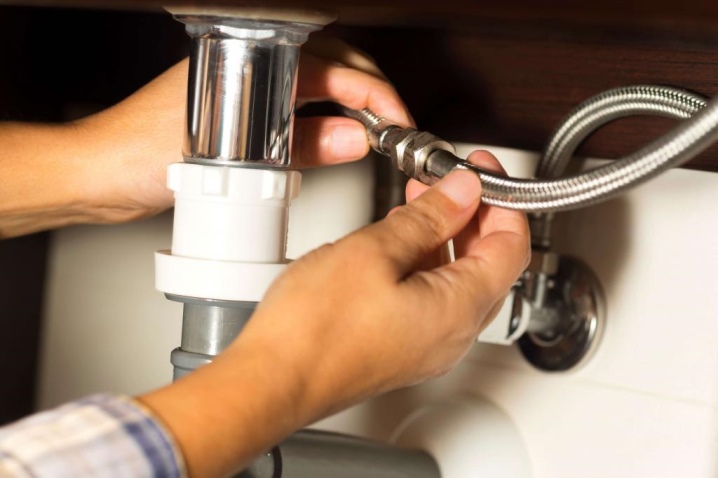
It is better to use box wrenches than open-end wrenches. They grip all 6 faces of the nut.
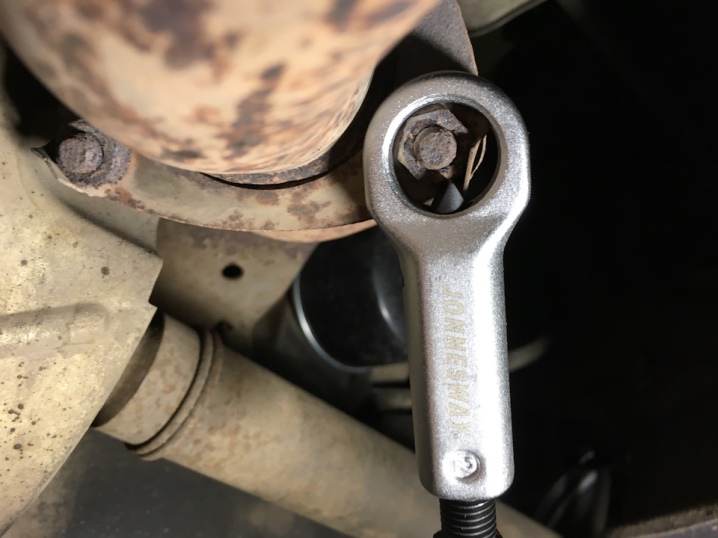
Using an adjustable wrench or open-end wrenches can compromise the integrity of the nut edges. It becomes round, as if erased. Such a rusted nut is cut down with a grinder or a hand hacksaw, if it is inconvenient to use an oversized tool under the sink.
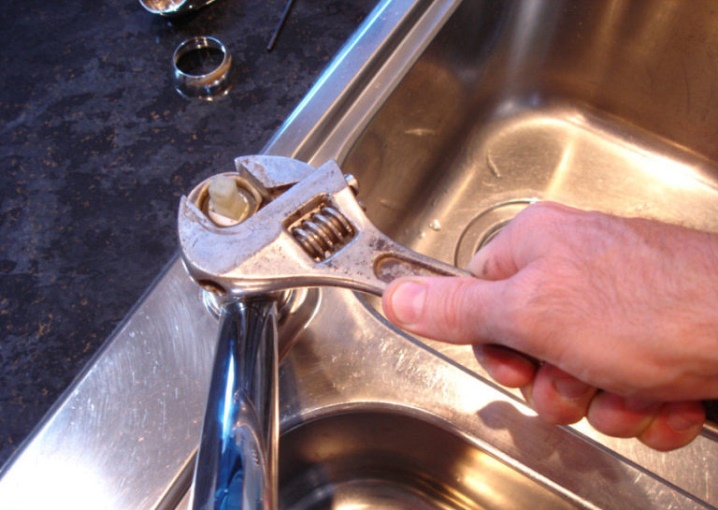
Methods and repair work
Kitchen and bathroom faucets are made of brass, which does not rust. But it, like other metals from which other parts can be made, sour as a result of interaction with scale, dirt and other substances. To get rid of rust and easily unscrew the stuck nut of the mixer, use the following methods:
- mechanical;
- thermal;
- chemical.
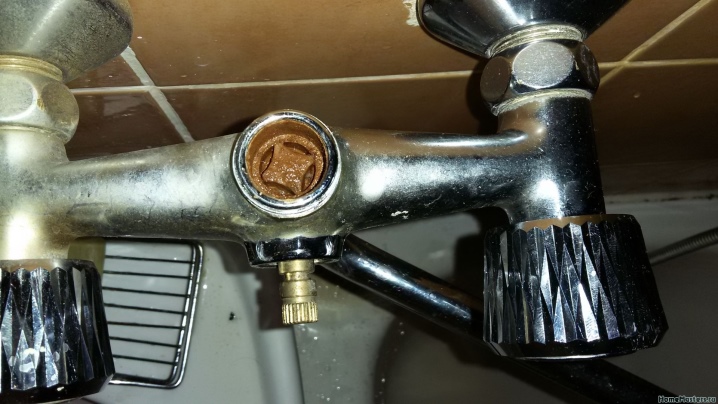
Try to unscrew first with open-end wrenches, box wrenches, socket wrenches, then adjustable wrenches. If it does not give in, change the impact force to a larger side by increasing the length of the key with a piece of pipe. Under force, the edges of the nut are erased. It becomes round. In some models of mixers, such elements are initially used.
When there are no edges, the key scrolls and cannot catch. In this case, a socket head is welded to the nut and unscrewed with a wrench. Or they make notches with a chisel with a hammer.
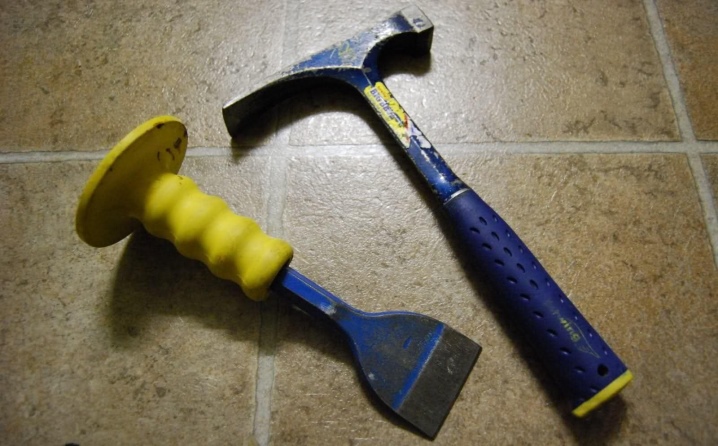
Heating sometimes helps. Temperature promotes expansion of the material. Use a variety of heat sources. A blowtorch is suitable for this purpose. But when heated strongly, the plastic parts of the mixer will melt. The hot air dryer creates a gentle temperature.
After heating, try to unscrew it by first tapping the nut and bolt. When tapped, rust and scale will crumble. Unscrew by swinging: first turn the key clockwise, then counterclockwise. Rust breaks down when the key is moved in different directions.
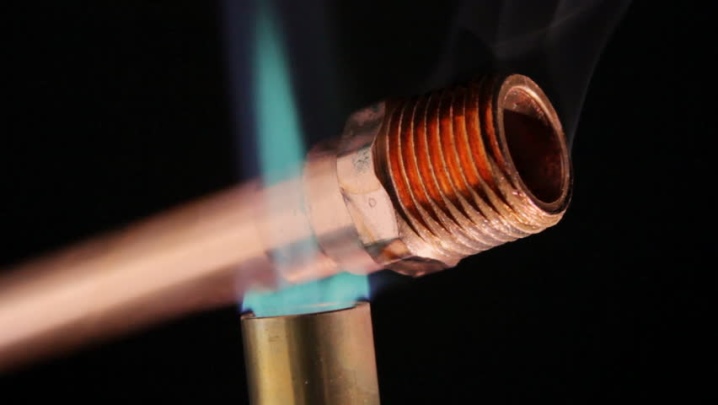
Mixers are faucets with many elements, each of which plays an important role in the functioning of the faucet. Therefore, you cannot use forceful methods when removing nuts, use tools that violate the appearance of the chrome-plated surface. Better to use chemicals to remove corrosion and scale.
In the bathroom, when replacing the cartridge of a single-lever mixer, first remove the handle (gander) of the mixer and the spout. To do this, unscrew the bolt on the body. There is a decorative piece under the handle that covers the main large nut. The decorative spherical nut is unscrewed by hand. But sometimes it also sticks to the body. Therefore, a solvent or acetic acid is poured under it. You can use a syringe and inject liquid under the part with a thin stream. Wait until the plaque is removed. Tap the edges using a wooden block. After that, put on a hexagonal spanner wrench that wraps around all the edges. Unscrew using the swinging method.
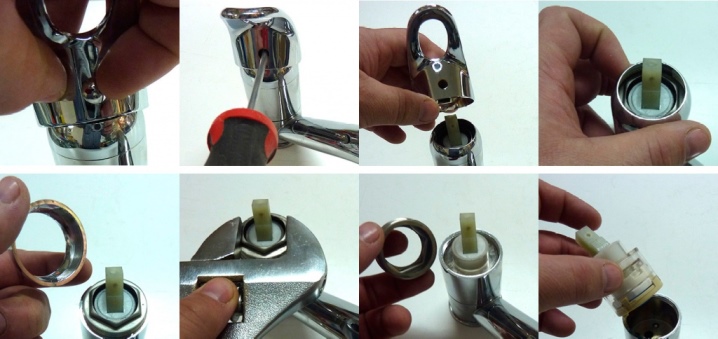
There is a large nut under the decorative piece. It fixes the cartridge in the lever mixers. Typically the large nut is made of brass. The yellow color makes it stand out from the rest of the crane. The large nut has 6 female threads.
If the goal is to preserve the mixer, you need to proceed with care, without violating the integrity of the nut. To unscrew, use a hex head, but it is better to use a socket wrench of the required size. Use penetrating liquids or vinegar before unscrewing. Moisten a cloth with vinegar and wait a few hours for the liquid to penetrate deeply. Then put on the socket wrench with a wrench and unscrew it carefully counterclockwise with jerks.
If the integrity of the large nut is not important, then it can be unscrewed with a simple adjustable wrench.
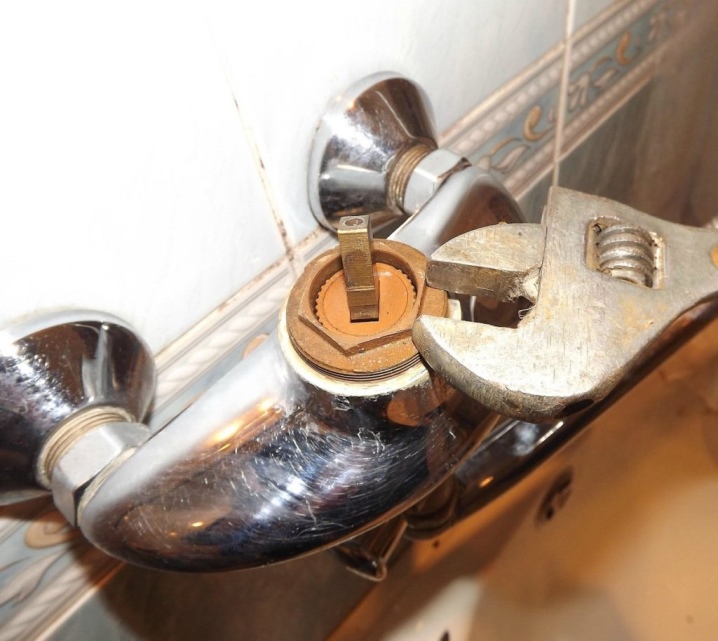
To destroy rust on metal products, chemicals are used:
- acid solutions;
- WP-40 tool;
- rust thinners.
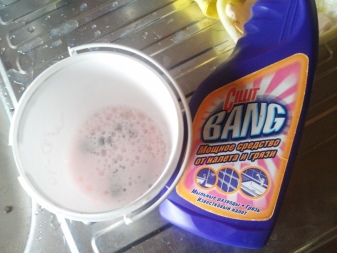

Solutions of acetic, hydrochloric, sulfuric, orthophosphoric acids, interacting with rust, partially eat it up, make it friable. The popular WP-40 product contains white spirit, volatile gasoline, and mineral oil. They also use gasoline, kerosene, alcohol to remove rust on the mount.
In plumbing repairs, a chisel and hammer are often used to destroy the rusted nuts under the sink.
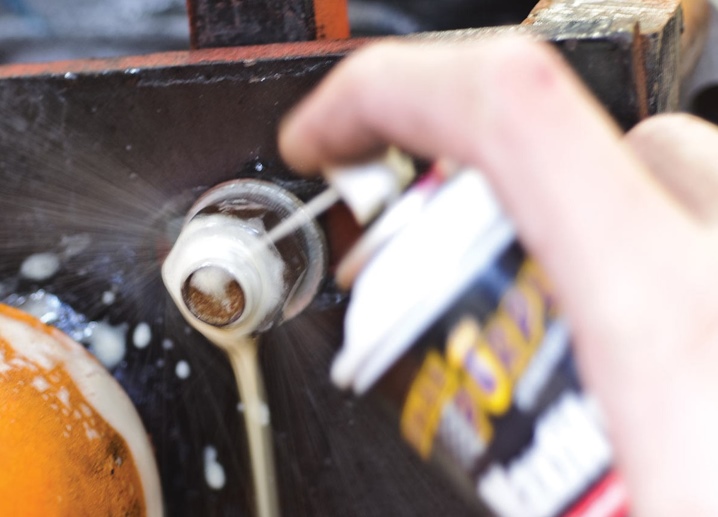
The help of chemicals in loosening a rusty nut is illustrated in the following video.
Recommendations
Based on the experience of many generations of plumbers and simple home craftsmen, basic conclusions can be drawn.
- In order not to have to suffer in the future with unscrewing, it is better to use mixers made of non-corrosive material.
- The service life of the mixer can be increased by applying lubricant while tightening the nut.
- If it is not possible to remove the nut, as a last resort, drill it out with a drill - carefully, without damaging the threads, in order to screw a new nut onto it in the future.
- Each mixer has assembly instructions. She will also help with unwinding parts, show the sequence of work.
- If the bolts have a thread direction to the right, it means that you need to unscrew it to the left, counterclockwise, and tighten it to the right. Unscrew the left thread direction to the right. But this option is very rare.
- If the nut is seated on a tool such as a thread lock, it cannot be removed without warming it up.
- When working with a large brass mixer nut or with worn edges, the Syper Lok head will help. During unscrewing, this tool applies force to the planes, not the faces.
- Use a serviceable tool and observe safety precautions when working with flammable substances and heating devices.
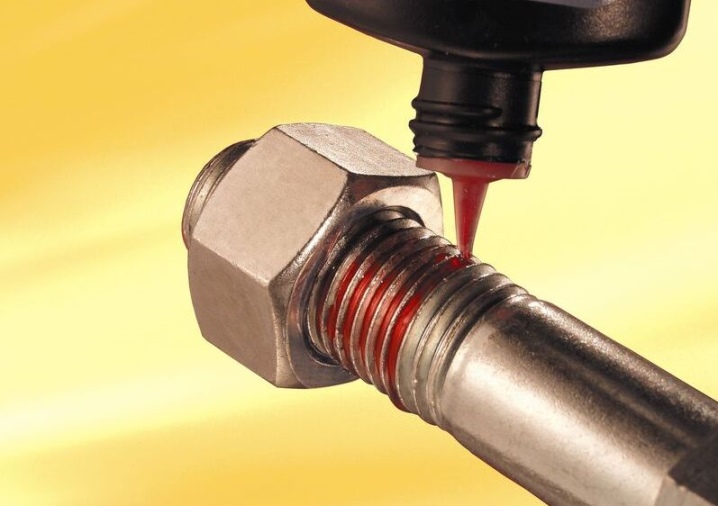
How easy it is to unscrew the nut and repair the mixer, you will learn from the video below.













I advise you to use a mixer made of good material, and lubricate the threads before tightening - it helps a lot to unscrew the stuck nut.
And if the decorative plastic nut has stuck so much that neither vinegar nor VD-40 liquid helps? Tell me how to remove a decorative problem nut on which there are no edges (it is spherical) from a single-lever mixer.
The comment was sent successfully.